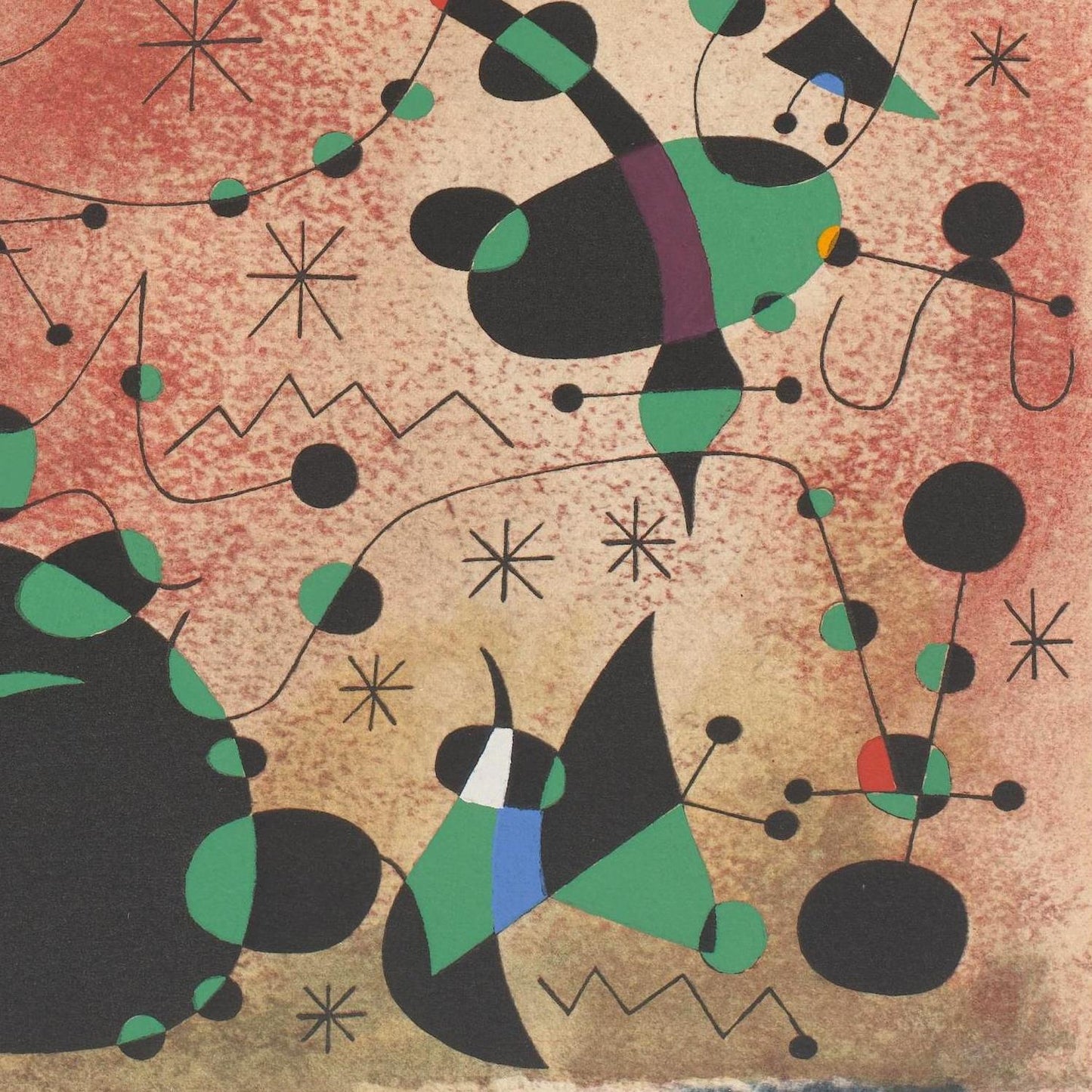The Passage of the Divine Bird (1941) is one of the most ethereal and spiritually charged works in Joan Miró’s Constellations series. Created during a period of exile and upheaval, the piece transforms the chaos of the outside world into a quiet, cosmic vision where symbolic creatures drift through a universe of lines, stars, and rhythmic markings. In this painting, the central theme is transcendence—the movement of a sacred, otherworldly bird through a dreamlike celestial space.
The “divine bird” is rendered not as a traditional figure but as an intricate constellation of curves, dots, and radiant bursts of color. Miró gives it an almost weightless presence, as though it is woven from starlight or spiritual energy. Its elongated form suggests both motion and transformation, a creature that glides effortlessly through a symbolic realm rather than the natural sky.
Surrounding this bird is a delicate network of fine black lines that web across the composition like filaments of thought or cosmic pathways. These lines intersect with tiny stars, floating shapes, eyes, and playful abstract symbols that create a sense of continuous vibration. The surface becomes a kind of musical score—every mark contributing to the painting’s rhythm.
Miró’s touches of red, blue, yellow, and green act like sparks or celestial signals, accenting the bird’s path and emphasizing the painting’s sense of movement. Though the composition is dense, it feels light and fluid, as though everything is in a state of harmonious suspension.
Through this mysterious passage, Miró evokes themes of protection, guidance, and revelation. The divine bird is less a literal being than a metaphor for spiritual insight moving through the turbulence of existence. The painting becomes a cosmic poem—an exploration of the unseen forces that accompany us, illuminating the unknown with quiet, luminous grace.

















